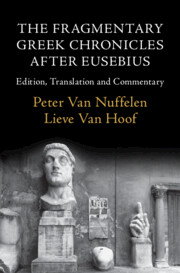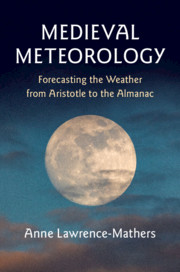Refine search
Actions for selected content:
8 results
Bede’s Medical Books
-
- Journal:
- Early Medieval England and its Neighbours / Volume 51 / 2025
- Published online by Cambridge University Press:
- 07 October 2025, e13
-
- Article
-
- You have access
- Open access
- HTML
- Export citation

The Fragmentary Greek Chronicles after Eusebius
- Edition, Translation and Commentary
-
- Published online:
- 11 September 2025
- Print publication:
- 24 July 2025
105 - Annianus of Alexandria, Chronography
-
- Book:
- The Fragmentary Greek Chronicles after Eusebius
- Published online:
- 11 September 2025
- Print publication:
- 24 July 2025, pp 215-309
-
- Chapter
- Export citation
100 - Andreas, Brother of Magnus, Chronography
-
- Book:
- The Fragmentary Greek Chronicles after Eusebius
- Published online:
- 11 September 2025
- Print publication:
- 24 July 2025, pp 59-175
-
- Chapter
- Export citation
4 - Insular Contact and the Manuscript-Culture of Brittany in the Ninth and Tenth Centuries
-
- Book:
- Brittany and the Atlantic Archipelago, 450–1200
- Published online:
- 21 October 2021
- Print publication:
- 28 October 2021, pp 143-179
-
- Chapter
- Export citation
2 - Meteorology, Weather Forecasting and the Early Medieval Renaissance of Astronomy
-
- Book:
- Medieval Meteorology
- Published online:
- 08 November 2019
- Print publication:
- 21 November 2019, pp 40-65
-
- Chapter
- Export citation
1 - Recreating Meteorology in the Early Middle Ages
-
- Book:
- Medieval Meteorology
- Published online:
- 08 November 2019
- Print publication:
- 21 November 2019, pp 17-39
-
- Chapter
- Export citation

Medieval Meteorology
- Forecasting the Weather from Aristotle to the Almanac
-
- Published online:
- 08 November 2019
- Print publication:
- 21 November 2019
